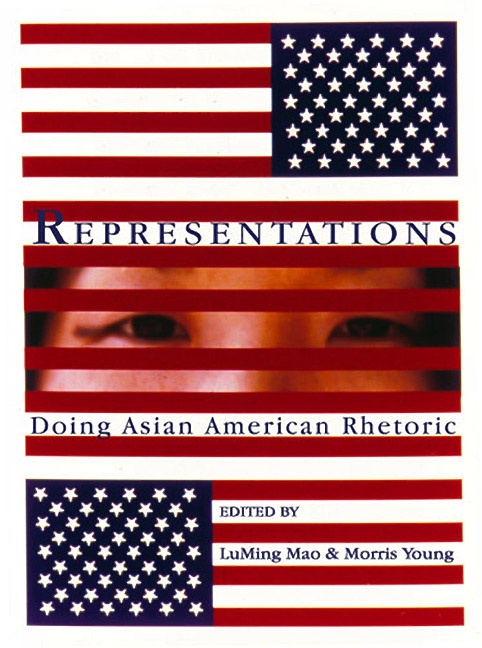Representations
Doing Asian American Rhetoric
Edited by LuMing Mao and Morris Young
Utah State University Press
Asian American rhetorics, produced through cultural contact between Asian traditions and US English, also comprise a dynamic influence on the cultural conditions and practices within which they move. Though always interesting to linguists and "contact language" scholars, in an increasingly globalized era, these subjects are of interest to scholars in a widening range of disciplines—especially those in rhetoric and writing studies.
Mao, Young, and their contributors propose that Asian American discourse should be seen as a spacious form, one that deliberately and selectively incorporates Asian “foreign-ness” into the English of Asian Americans. These authors offer the concept of a dynamic “togetherness-in-difference” as a way to theorize the contact and mutual influence. Chapters here explore a rich diversity of histories, theories, literary texts, and rhetorical practices. Collectively, they move the scholarly discussion toward a more nuanced, better balanced, critically informed representation of the forms of Asian American rhetorics and the cultural work that they do.
Mao, Young, and their contributors propose that Asian American discourse should be seen as a spacious form, one that deliberately and selectively incorporates Asian “foreign-ness” into the English of Asian Americans. These authors offer the concept of a dynamic “togetherness-in-difference” as a way to theorize the contact and mutual influence. Chapters here explore a rich diversity of histories, theories, literary texts, and rhetorical practices. Collectively, they move the scholarly discussion toward a more nuanced, better balanced, critically informed representation of the forms of Asian American rhetorics and the cultural work that they do.
The rhetorical movements of Asian Americans . . . can help teachers and students learn from the logic of non-idiomatic uses of English by users across the world.
--Min-Zhan Lu and Bruce Horner, from the foreword





